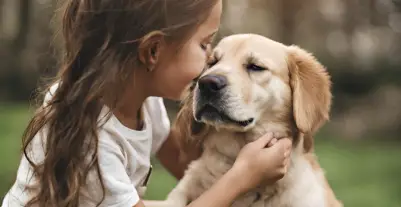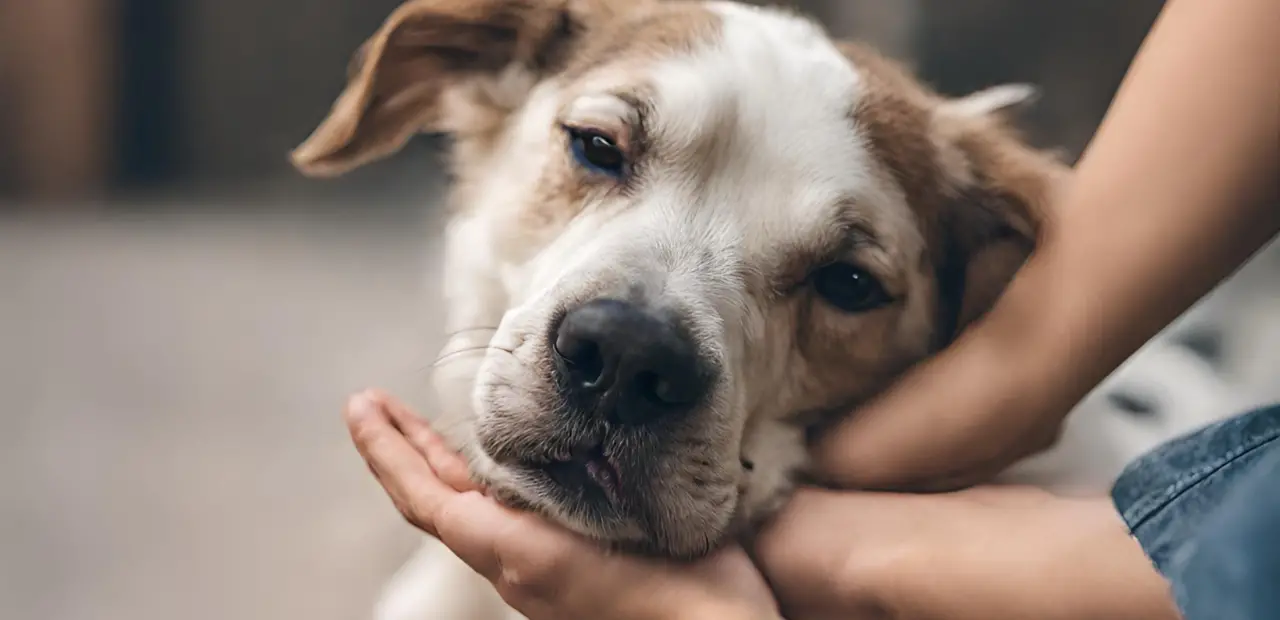Tail-wagging pals who never fail to bring joy into our lives. One of the greatest pleasures of having a canine companion is showering them with love and affection. But where do dogs like to be petted the most? Are there secret spots that make them do the doggy dance of happiness? In this guide, we’re diving deep into the world of doggie petting preferences, with a sprinkle of humor and a whole lot of tail-wagging insights.
The Basics of Dog Petting
Before we get into the nitty-gritty of where dogs like to be petted the most, let’s cover some petting basics. Dogs, like humans, have unique preferences when it comes to physical affection. What one dog adores, another might tolerate, and some might downright dislike.
Read the Signals: It’s crucial to pay attention to your dog’s body language. If they lean into your hand, wag their tail, and offer a relaxed expression, you’re on the right track. If they pull away, growl, or show signs of discomfort, it’s time to stop the petting party.
Start Slowly: Not all dogs are immediately comfortable with being petted all over. Begin with gentle strokes on their back or chest to gauge their reaction. Gradually explore other areas if they seem at ease.
Avoid Sensitive Spots: Just like humans, dogs have sensitive areas that you should avoid or approach with caution. These include their ears, paws, and tails. We’ll explore these in more detail later.
Mind the Context: Dogs are highly context-sensitive creatures. What they enjoy during a relaxing snuggle session might differ from what they like during playtime or after a long walk.

The Top Spots Dogs Love to Be Petted
Now, let’s dive into the specifics. Here are some of the top spots where dogs generally love to be petted the most:
- The Head and Ears
Think of your dog’s head as their happy button. Most dogs adore gentle petting on their head and ears. Here’s how to do it right:
Behind the Ears: This spot is pure gold for many dogs. Gently scratch or rub the area behind their ears, and you’ll often see their eyes half-close in bliss.
Between the Eyes: A light, loving stroke between their eyes can be incredibly soothing for your furry friend.
- The Neck and Chest
Moving down the doggy body, the neck and chest area is another prime petting real estate. This is especially true for larger breeds. A few firm yet gentle strokes here can elicit contented sighs. - The Back and Belly
The back and belly are generally safe zones for petting, but they can be a bit tricky. Here’s the lowdown:
Back: Most dogs enjoy a nice back scratch. Start at the base of the neck and work your way down to the tail, following the direction of their fur.
Belly Rubs: Ah, the infamous belly rubs! While many dogs relish them, not all do. Approach this area with caution, especially if your pup is on the shy side. If they expose their belly willingly, you’re in for a treat.
- The Base of the Tail
The base of the tail is often a winner in the petting game. Dogs often love having this area scratched or rubbed gently. It’s like the secret “happy zone” for many canines. - The Hips and Hindquarters
Moving towards the back end, some dogs enjoy being petted around the hips and hindquarters. This can be especially true for athletic or working breeds. It’s not as universal as other spots, so pay attention to your dog’s cues.
The Sensitivity Spectrum
Now that we’ve covered the top spots, it’s time to talk about sensitivity. Dogs can be as particular as humans when it comes to touch. Here’s a breakdown of the sensitivity spectrum for some common petting areas:
- Ears:
Dogs’ ears can be quite sensitive. Some dogs love having their ears rubbed or scratched, while others may find it irritating or uncomfortable. Approach with care, and if your dog enjoys it, they might lean into your hand for more. - Paws:
Many dogs have a love-hate relationship with their paws. Some tolerate gentle paw massages, while others might pull their feet away. Be cautious with this area and monitor your dog’s reaction closely. - Tail:
The base of the tail is usually a safe bet for petting. However, as you move towards the tip, some dogs may become more sensitive. Always respect your dog’s comfort zone. - Belly:
The belly is a hit or miss for many dogs. Some roll over eagerly for belly rubs, while others might snap or growl if you go near this area. Watch for signs of relaxation or tension when you approach the belly.
The Playful Pause Button: The Tail
A dog’s tail is like their emotional meter. Understanding what it’s trying to convey can help you gauge their feelings during petting. Here’s a quick guide to decoding the tail language:
Wagging Tail: A wagging tail usually signifies happiness and excitement. The faster the wag, the more joyful your dog is feeling.
Tucked Tail: If your dog tucks their tail between their legs, it’s a sign of fear or submission. Stop petting immediately and give them space.
Stiff Tail: A stiff, raised tail can be a sign of alertness or aggression. Approach with caution or give your dog some space, depending on the context.

Individual Preferences
While we’ve covered some general guidelines, it’s essential to remember that every dog is unique. Just like people have varying tastes in food and music, dogs have different petting preferences. Here are some factors that can influence where your dog likes to be petted:
- Breed:
Certain breeds have specific preferences. For example, Golden Retrievers often adore belly rubs, while Greyhounds might prefer neck scratches. - Past Experiences:
A dog’s past experiences can shape their preferences. A rescue dog with a traumatic history might be more sensitive in certain areas. - Age:
Puppies and senior dogs might have different preferences. Puppies often have more energy and may enjoy more active play, while senior dogs might prefer gentler petting. - Health:
If your dog has any health issues or injuries, they might have particular areas that are off-limits or need extra care.
Experiment and Observe
The key to finding out where your dog likes to be petted the most is simple: experiment and observe. Pay attention to your dog’s cues, and don’t be afraid to try different spots. Here’s a playful exercise you can do:
Start with a gentle petting session on your dog’s head and ears. Notice their reaction—do they lean in or pull away?
Move on to the neck and chest. Does your dog seem relaxed and content?
Try the back and belly. Are they rolling over for belly rubs or staying on all fours?
Explore the base of the tail and the hips. Do they seem to enjoy it, or are they indifferent?
Remember, it’s all about building a strong bond with your furry friend and making them feel loved and comfortable.
The Science of Petting
Believe it or not, there’s some science behind why dogs love to be petted. When we pet our dogs, it releases feel-good chemicals in both their brains and ours. Here’s a quick rundown:
Oxytocin: Known as the “love hormone,” oxytocin is released in both dogs and humans during petting sessions. It promotes feelings of bonding and affection.
Endorphins: Petting also triggers the release of endorphins, which are natural painkillers and mood boosters. This is why your dog often looks so blissful when you’re scratching their favorite spot.
Relaxation: Petting can help reduce a dog’s heart rate and lower their stress levels. It’s like a mini spa session for your furry friend!
The Dos and Don’ts of Dog Petting
To ensure that your petting sessions are enjoyable for both you and your dog, here are some important dos and don’ts to keep in mind:
Dos:
Observe Body Language: Pay close attention to your dog’s cues. If they’re loving it, continue; if they’re not, stop immediately.
Start Slow: Begin with gentle strokes to help your dog relax before moving to more intensive petting.
Do Respect Individual Preferences: Remember that each dog is unique. What works for one may not work for another.
Be Mindful of Health: If your dog has any health issues or injuries, be extra cautious and avoid sensitive areas.
Don’ts:
Don’t Force It: If your dog doesn’t want to be petted or is showing signs of discomfort, never force them to endure it.
Don’t Approach Aggressive Dogs: Avoid petting dogs you don’t know, especially if they show signs of aggression or fear.
Don’t Overdo It:
While petting is fantastic, too much of a good thing can be overwhelming for your dog. Balance is key.
Don’t Disregard Signs of Stress:
If your dog seems stressed or anxious during petting, stop immediately and assess the situation.
Conclusion
So, where do dogs like to be petted the most? The answer is not a one-size-fits-all. Dogs have their unique preferences, influenced by their breed, past experiences, and individual quirks. The key to finding the sweet spot is to observe, experiment, and most importantly, show your furry friend love and respect.
Remember, petting your dog is a wonderful way to bond and build trust. Whether it’s behind the ears, on the chest, or at the base of the tail, every petting session is a chance to strengthen the special connection between you and your loyal companion. So, go ahead, unleash the petting prowess, and watch your dog light up with joy!
And who knows, maybe your dog has a secret preference for that spot right behind their left ear or a funny dance they do when you hit the jackpot petting spot. The adventure of discovery is all part of the fun when it comes to sharing your life with a furry, four-legged friend. So, get out there, pet away, and let the tail-wagging good times roll!
- Smelly House Because of Dog? Take These Hygiene Tips - May 20, 2025
- How to Introduce a Dog To a Cats Without Chaos - May 6, 2025
- 4 Best Cavapoo Rescues in the UK 2024 - April 5, 2024








